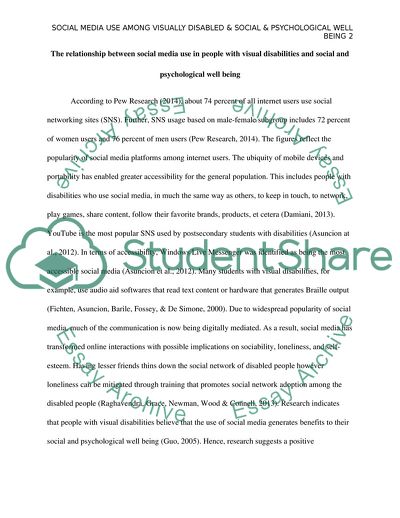Cite this document
(The Relationship Between Social Media Use in People With Visual Literature review, n.d.)
The Relationship Between Social Media Use in People With Visual Literature review. https://studentshare.org/psychology/1855283-discuss-the-relationship-between-social-media-use-in-people-with-visual-disabilities-and-social-and-psychological-well-being
The Relationship Between Social Media Use in People With Visual Literature review. https://studentshare.org/psychology/1855283-discuss-the-relationship-between-social-media-use-in-people-with-visual-disabilities-and-social-and-psychological-well-being
(The Relationship Between Social Media Use in People With Visual Literature Review)
The Relationship Between Social Media Use in People With Visual Literature Review. https://studentshare.org/psychology/1855283-discuss-the-relationship-between-social-media-use-in-people-with-visual-disabilities-and-social-and-psychological-well-being.
The Relationship Between Social Media Use in People With Visual Literature Review. https://studentshare.org/psychology/1855283-discuss-the-relationship-between-social-media-use-in-people-with-visual-disabilities-and-social-and-psychological-well-being.
“The Relationship Between Social Media Use in People With Visual Literature Review”. https://studentshare.org/psychology/1855283-discuss-the-relationship-between-social-media-use-in-people-with-visual-disabilities-and-social-and-psychological-well-being.


